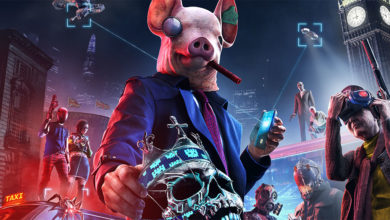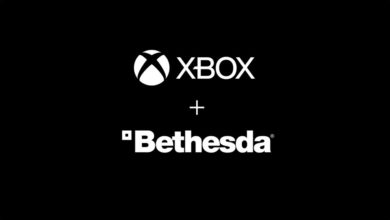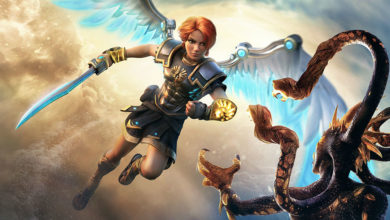It’s very easy to get lost in Assassin’s Creed: Brotherhood.
For starters, Rome is massive. Large enough to facilitate the development of an effective horse poop disposal system so that the citizens don’t walk themselves to death. To top that, rather than gradually opening up the bevy of missions available to choose from, the map literally explodes into a plethora of icons, to an extent where spotting your own icon could have been another side mission. And if this wasn’t enough, Ubisoft was kind enough to put some additional VR missions in the Animus, collectibles outside the Animus, and a full-fledged multiplayer mode as well.
[singlepic id=2438 w=450 float=center]
It’s quite clear that the developers pulled out all stops in delivering on this game. Or did they? There’s no denying that Assassin’s Creed has earned a place of prominence among established gaming franchises. And it has done so by taking the offbeat path of unconventional control schemes, fluid parkour mechanics, and premises previously unexplored in gaming, all coming together in an engaging narrative that presents an alternate view of the history of mankind.
How does Assassin’s Creed: Brotherhood measure up to the foundations of its parent franchise? In stark contrast to previous releases, instead of moving on to a different setting and protagonist, the game stays rooted in Renaissance Italy, and picks up the story of Ezio Auditore Da Firenze (and Desmond) after the events Assassin’s Creed 2. Without going into too much detail of either, Rome is in the tyrannical grips of one Cesare Borgia, who has stunk up the place by ignoring the upkeep of the aforementioned poop disposal system. The game follows Ezio’s rise to the leader of the Assassin Order, and his quest to liberate Rome from the unholy union of megalomania and lunacy that is Cesare.
[singlepic id=2436 w=450 float=center]
All missions in the game, story related or otherwise, deliver this quest, giving the game a sense of progression. So whether you are destroying Borgia towers, renovating various shops and landmarks, or assassinating templar agents, everything contributes to restoring Rome to its former glory. That said, they couldn’t have come up with a more convoluted end to it even if they tried. It’s a pity, because I expected both resolution (to Ezio’s tale) and revelation (in Desmond’s story) to nicely set up the next installment. What I got was confusion, questions and a rather steep cliffhanger. It ends up defeating the whole purpose of the single player campaign, once you look past the bells and whistles and realise how little the story has progressed, and how easily all of it could have been incorporated in the next numbered installment.
So while the story, or rather how it was handled, is a little disappointing, the gameplay itself is the best so far in the series, with multiple refinements over the existing gameplay. The overall level design of the platforming sequences across the game has improved, making it more challenging, but never frustrating. In fact, a layer of challenge has been implemented through the entire level by introducing differing synchronization levels. Every mission comes with a pre-set requirement, such as finishing it in a set time, or not losing more than a set number of health cubes. Achieving this gives the player 100% sync, while failing leads to 50% sync. There are no penalties for not achieving full sync, but the master assassins among us would like to bend it like Ezio, adding re-playability to the missions.
[singlepic id=2437 w=450 float=center]
The nifty addition of combos has marginally improved the combat which has traditionally been a weak suit for the game. Once you score a kill, pressing attack at the right time nets you another insta-kill, allowing you to clean house by racking up a high combo. This allows the game to throw more enemies, and more aggressive enemies at you, which thankfully makes the whole thing look more like a fight than a ballad. The enemy AI, however, still needs more consistency, especially in the stealth sections of the game. An unknown man disappearing for 20 seconds after being clearly spotted 100 meters from the Pope is no reason to stop looking for him.
The biggest addition to the single-player campaign is the introduction of minions (yes, I like calling them that!). As the leader of the Assassin Order, Ezio can recruit citizens oppressed by the Borgia. These recruits can then be called upon to aid Ezio in many of the missions, and if used well, can be very efficient and give the player a real sense of power. Nothing beats having your target firmly in sight, signalling an attack and watching your recruits descend upon them from the holy heavens to do your dirty work. In addition, the player can also level up the recruits by having them complete missions across Europe, beefing up their offensive and defensive capabilities.
[singlepic id=2439 w=450 float=center]
So you are not alone in your quest this time around, and to play up this point even further, Ubisoft has introduced multiplayer for the first time in the series. Far from being a tack-on, the multiplayer is among the most innovative offerings in online gaming in recent times. In this unique game of cat and mouse, the focus is on the chase rather than the kill, the latter being reduced to the press of the button. While there are multiple game modes on offer, they all stem from the basic Wanted mode, where each player is assigned a target from among the rest of the players, and the rest of the map is populated with doppelgangers. The player has to then assassinate his target with the help of a compass, while the target has to either stay hidden, or make a run for it if discovered. What makes the whole thing more interesting is the fact that you are assigned a target, and as a target simultaneously. The thrill of bearing down upon your target, coupled with the stress of watching your back as your hunter closes in on you is among the most refreshing and enjoyable multiplayer experiences of the year.
This core framework is further supported by a range of well balanced maps, and a level progression system complete with perks and abilities. In addition, Ubisoft has also ironed out some of the problems that plagued the beta, and finding a game no longer feels like chancing upon the Holy Grail. For a more detailed analysis of the multiplayer mode, feel free to check out our Assassin’ Creed Brotherhood multiplayer beta Impressions here.
[singlepic id=2314 w=450 float=center]
Conclusion
Like I said earlier, it is very easy to get lost in Assassin’s Creed: Brotherhood. Yet, despite the great refinements, innovative multiplayer and the mountain of content, it is important to acknowledge the fact that Brotherhood ignores what the series has established – the joy of exploring a world that is completely new. It might be unfair to call it a cash-in for all the effort that has gone into crafting it, but in light of the stunted story progression, are the incremental changes and a multiplayer component worth a full disc release? It’s a difficult question to answer. I’m inclined to call it a cash-in worth every penny it charges, but a cash-in nonetheless.




